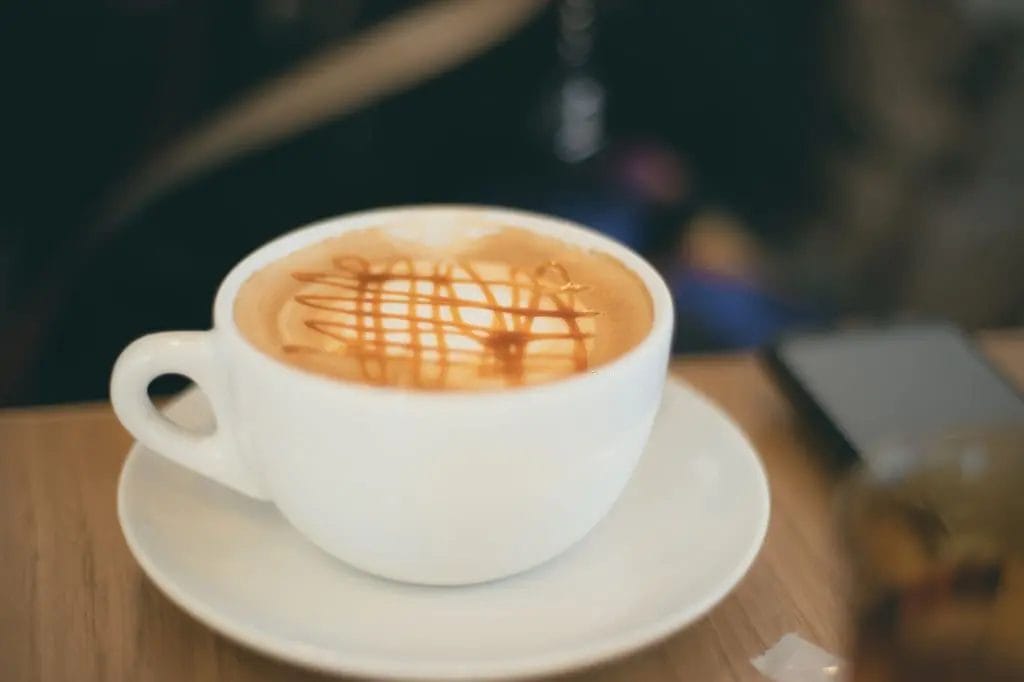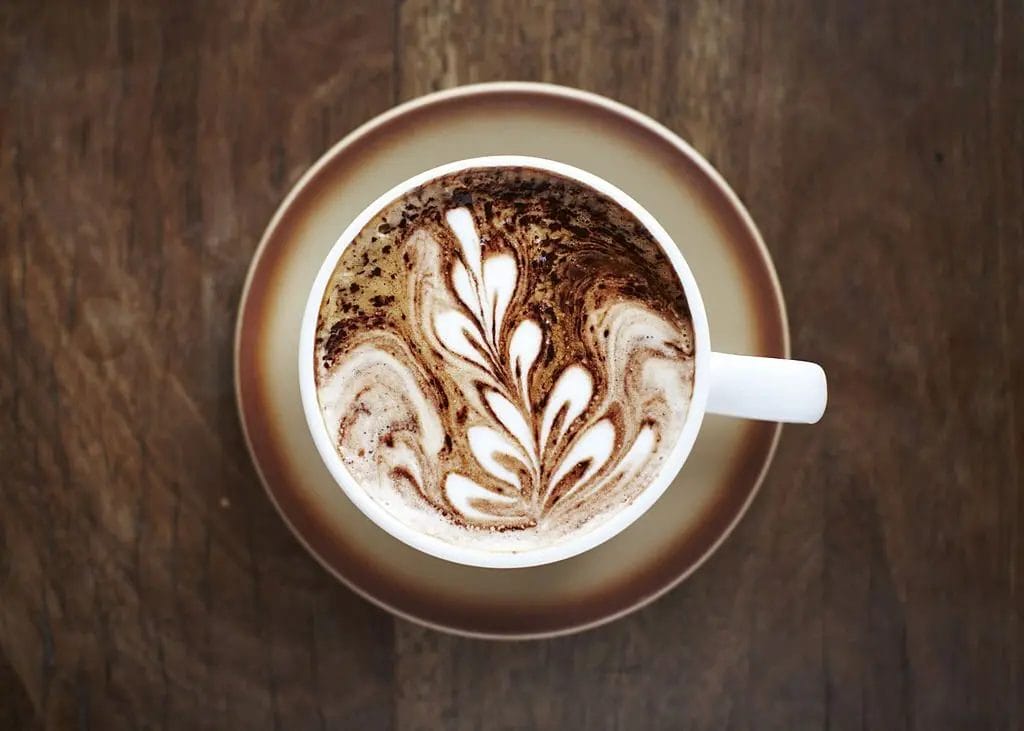The strength of a shot of Espresso is not for everyone. So it became a thing to mix milk with Espresso to create a wide variety of coffee drinks. Considering the limitless combinations of Espresso and milk, depending on brewing method and ratio differences, it can be tough to compare a proper choice. To make it simple for the coffeenomies, today we’ll be comparing the two most popular milky coffee drinks in our Macchiato vs Cappuccino article.
Let’s see which of these popular coffee beverages is superior when you consider the competition between Macchiato and Cappuccino.
But first, let’s get introduced to today’s contenders.
Macchiato

A traditional Macchiato is a mix of Espresso and milk (obviously), but the amount of milk is really small, which is where the name comes from. In this case, the milk is staining or leaving a mark on the Espresso itself.
There are a lot of variations of a standard Macchiato, the most common variation being the Latte Macchiato. This one’s made with Espresso and a full glass of hot milk. The milk ratio is so high that you could almost say the Espresso is the one staining the milk here.
The word “Macchiato” is an Italian word that means “stained” or “marked.”

But since the standard Macchiato uses a small amount of milk, the flavor of the coffee is really strong compared to other milk-mixed coffee beverages.
Also, Macchiato is served at a much smaller scale than other standard coffee beverages, with the standard serving size being only 1.25 ounces.
Cappuccino
Any coffee lover worth their beans knows about Cappuccino. It’s one of the most beloved beverages in the current coffee world.

Cappuccino is a mix of coffee and milk, but it’s topped with a light layer of foamed milk to give the drink an extra aesthetic look and flavor buzz with an airy texture with the layer of foam.
Unlike Macchiato, all the ingredients of a cup of Cappuccino are mixed in at an equal portion. As a result, the perfect balance of all the components gives Cappuccino a rich taste, along with a smooth texture and creamy feel, making it a balanced, full-bodied beverage.
Like Macchiato, there are different Cappuccino variations as well.
- Dry Cappuccino
- Wet Cappuccino
The dry variation contains more milk than the layer of foam. In addition, many cups of dry Cappuccino are sprinkled with cocoa powder for a flavor boost.
Wet cappuccino variation contains more hot milk than a standard Cappuccino, almost similar to a Macchiato.
Macchiato Vs. Cappuccino: What Are The Differences?
Even if we disregard the different variations for both these drinks, quite a few factors set both the base drinks apart.
Factor #1: Origin
History for both the Macchiato and the Cappuccino is unclear and dodgy at best since there’s next to zero information about where both these drinks first started.
Italy is commonly cited as the origin for Macchiato, mostly because Espresso also originated from Italian coffee culture and took off back in the late 19th century.
Cappuccino’s history has a bit more detailed theory behind it. There are suggestions that Cappuccino is a modern version of “Kapunizer.” It’s a drink popular in 19th-century Vienna coffee bars and was made with a mix of milk and sugar.
There’s another theory that’s far more interesting. The theory is that the modern, Americanized version of Cappuccino came from Italy back in 1901, but the name itself didn’t come in before 1930.
The term “Cappuccino” was coined by the Capuchin friars. But what do friars have to do with a cup of coffee?

You see, the Capuchin friars used to wear distinct brown robes, and the color was similar to the coffee color of Cappuccino.
Factor #2: Preparation Method
The cappuccino preparation method starts with ensuring that Espresso, steamed hot milk, and milk foam are mixed in at an equal portion. But this portion and ingredients vary, depending on which country you are in or which coffee shop you’re ordering from.
A professional barista may choose to brew a cup of Cappuccino that has a distinct layer of a certain element, while others offer a consistent combination.
But according to most coffee aficionados, the true characteristic separating different cappuccinos is the serving size. They insist on the serving size of the drink being not larger than 4 ounces. But still, there are larger, 6 ounces versions of the drink available almost everywhere.
The Macchiato, however, doesn’t maintain the same style of consistency compared to the Cappuccino. Instead, the drink is a single or a double shot of Espresso that’s served with a bit of milk foam layered on top and served in 3-ounce sizes.
Though it’s the universal method for a standard Macchiato, some baristas pour the foam into the coffee and create latte art. So if you wondered if coffee could ever be an art form, now you have your answer.

Factor #3: Flavor Profile
In the battle of flavor, we know that Macchiato only has a dash of milk layered over it, it doesn’t affect the Espresso that much, and you can taste the Espresso flavor in (almost) all its glory.
Macchiato gives you a slight touch of sweetness, and that’s what makes it less intense than a standard single shot or double shot espresso.
Since Macchiato is served at a smaller size, it’s best served and enjoyed as an afternoon treat.
The taste of a fine cup of Cappuccino lingers for a long time that focuses less on the Espresso and more on the sweetness. In Italy, Cappuccino is a staple item to accompany their breakfast.
Factor #4: Milk Used For Brewing
There isn’t much difference between the milk used to brew Macchiato and Cappuccino. You can brew both these drinks with whole milk.
But the difference comes in terms of fat levels. If you use milk with lower fat or no fat, the milk foams up much better. So you can choose between 2% fat milk, non-fat milk, and whole milk, depending on your personal preference.
There are other alternatives that you can use to brew both the drinks, such as:
- Almond Milk
- Oat Milk
- Coconut Milk
Though they create a unique tasting experience, they don’t create a layer of milk foam and cow’s milk. But I assure you, the flavor’s worth it.
Having fun Nomies? Check out another piece on how to switch to black coffee.
Factor #5: Coffee Type Used For Brewing
Both common variations of these coffees use straight Espresso as the base drink, so the Espresso is first brewed using a standard Espresso machine. If you’re brewing at home and don’t have an Espresso maker, you can use either a Moka pot or an AeroPress to get the same result.
The difference lies within the amount of Espresso used in the drinks. For example, a Cappuccino uses a single shot Espresso as the base drink, while the Macchiato uses a double shot Espresso.
But, the milk ratios always change depending on the coffee amount, which creates the difference. You can even make a Macchiato with a single shot of Espresso and less steamed milk.
But don’t worry about the coffee tasting underwhelming. As long as you keep the portions of milk and coffee right, you can get an amazing morning cup.
Factor #6: Calorie Difference
The milk content used in both drinks gives them the calorie difference since black coffee is virtually zero-calorie. Here’s a small table to make it easier for you.
| Coffee | Amount Of Coffee | Amount Of Milk | Calorie Count |
| Cappuccino | 1 oz (30ml) Espresso | 2 oz (60 ml) whole milk | 34 |
| Macchiato | 2 oz (60 ml) Espresso | 2 oz (60 ml) whole milk | 34 |
Though the basic drink contains calorie levels, we all know that different places use different recipes with different amounts of milk used in both drinks. So the calorie count can vary a lot.
Also, note that these calorie counts are without any sweeteners. The count goes up when you throw a bit of sugar or flavor syrups into the mix.
Factor #7: Caffeine Content Difference
Since Macchiato uses more Espresso than Cappuccino in its recipe, it contains higher amounts of caffeine than Cappuccino.
A standard cup of Cappuccino contains 68 mg of caffeine, while a Macchiato contains 136 mg of caffeine per cup.
To put it simply, Macchiato uses double the Espresso compared to Cappuccino, which doubles the caffeine count along with the caffeine buzz.

Had fun reading our piece on macchiato vs cappuccino?
You’ll love to read our piece on single origin vs blend espresso.
Bottom Line
Since Macchiato and Cappuccino are both lattes, the line of difference between both drinks is very thin. But still, knowing the difference lets you better understand which drink suits your personal preference the most.
If you plan to try out any of these milky coffees, we hope you have a wonderful experience with your beverage of choice.
Cheers!
FAQs
A perfect Cappuccino is a simple coffee drink with the right mix of Espresso, steamed milk, and milk foam on top.
Every espresso maker has a steaming wand. You can use the steaming wand for steaming milk if you have an espresso maker. If not, you can always adapt the old-fashioned stovetop method.
With simple homebrew equipment and basic coffee skills, you can brew these drinks at home without any expensive machine since the recipe is almost similar and customizable according to personal taste.
Though both the Espresso Macchiato and the Cappuccino can be considered lattes, their names come from different origins.
Macchiato has more caffeine than Cappuccino since it uses more Espresso shots, a highly concentrated caffeine beverage.

